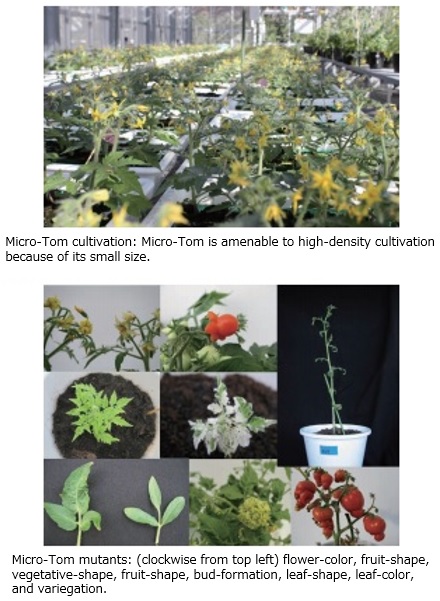
- Core Center:Institute of Life and Environmental Sciences/Tsukuba-Plant Innovation Research Center, University of Tsukuba
- Principal Investigator:Hiroshi Ezura
- Sub-Core Center 1:School of Agriculture, Meiji University
概要Overview
 Studies on gene function, cultivation characteristics, and fruit chemistry of tomatoes attract much interest from scientists because tomatoes have one of the largest cultivation areas among all fruits and vegetables. In addition, tomatoes have the potential to become the next model plant for both basic and applied research. Tomato research contributes to the understanding of fruit development and light-independent flowering, both of which are unexplorable physiological events in traditional model plants. Additionally, metabolites in tomatoes are highly sought after target molecules in industrial research.
Studies on gene function, cultivation characteristics, and fruit chemistry of tomatoes attract much interest from scientists because tomatoes have one of the largest cultivation areas among all fruits and vegetables. In addition, tomatoes have the potential to become the next model plant for both basic and applied research. Tomato research contributes to the understanding of fruit development and light-independent flowering, both of which are unexplorable physiological events in traditional model plants. Additionally, metabolites in tomatoes are highly sought after target molecules in industrial research.
Stock
・Cultivars, wild species, and crossed lines: about 100 lines
・Individual mutant collections: about 2,500 lines
・EMS-treated bulked M3 seed set: originated from about 5,500 lines
・T-DNA insertion lines: about 500 lines
・cDNA and full-length cDNA clones: about 270,000 clones
Subjects in the NBRP programs “Genome information upgrading program” and “Fundamental technology upgrading program” related to “Tomato”
【 Genome information upgrading program 】
| FY2010 | Sequence analysis of Micro-Tom sequencing |
| FY2009 | Micro-Tom BAC end sequencing |
| FY2008 | Enhancing tomato resources by sequencing Micro-Tom full-length cDNA |
